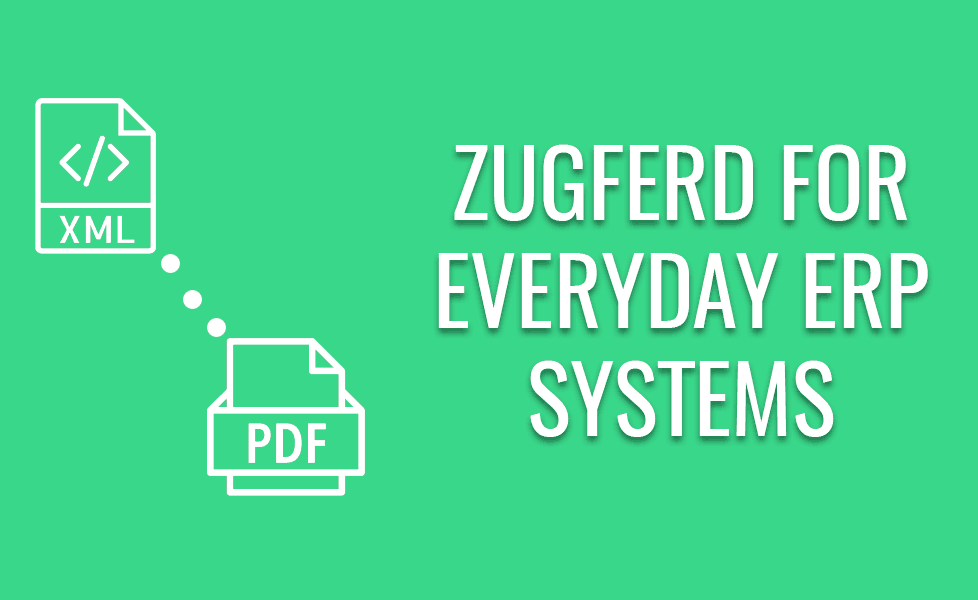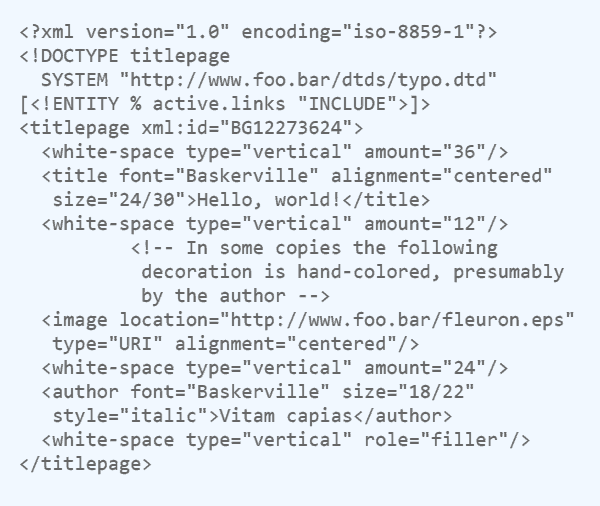ZUGFeRD for everyday ERP systems

ZUGFeRD stands for the Central User Guide for Electronic Invoicing and is a standardized e-invoicing process created and used in Germany and soon to be rolled out in other countries in Europe.
From a top level point of view, it is the unified data format for electronic invoicing which can transfer documents in a standardized fashion from one machine to another without the help of humans – automated invoicing, if you will. Introduced into Germany in 2014, the guide follows the PDF/A ISO standard as well as meeting both European and international tax standards. This makes it a transferable standard across the world so that companies in any industry can simplify the way they handle taxable documents like invoices and purchase orders. Other countries have pushed to introduce these regulations, with Portugal, Italy, Austria and other EU countries making e-invoicing the norm in public administration over the past four years. It is obvious with other countries beginning this conversation also, that ZUGFeRD is hugely important and will only grow in popularity among governments across the world in the future.
ZUGFeRD works from the premise that commonly shared documents can be automated and shouldn’t rely on email or other communication which includes manual labor and are prone to human error. The transfer of information from machine to machine without human interaction is called Electronic Data Interchange (EDI). EDI is by no means new in the world, and it can replace common communication channels were standard documents are shared between co-workers or companies often. Examples include invoices, purchase orders, inventory slips and delivery dockets. This system helps to automate ERP and accountancy while also allowing for effective archiving of invoices for companies to move to a more digital future.
Contents
How ZUGFeRD can help businesses
EDI sounds like a straightforward process, but it can get quite complicated when you introduce PDF and ZUGFeRD into the mix. For this standard, and from a technical perspective, it requires an XML file to be embedded into a PDF so that you can view a document through both a structured invoice as an XML file and as a PDF.
What is the value of this to a business and its employees?
A PDF is easily readable by a human. It has a set structure, and its appearance makes it easy to understand the theme of the document quickly. However, a computer cannot read a PDF document easily, particularly in the case of invoices received, where each company will use a different template, usually built without following any type of guidelines. If you want to automate your ERP system, then making a file easily readable by a machine is the essential part of the process.
This is where an XML file comes in. An XML file is straightforward nested markup document of a particular design that suits a specific purpose. It is not easily readable by humans unless they have a background in software development but computers can quickly scan and understand the content within this type of document instantaneously. ZUGFeRDs embedded XML files are based on Core Cross Industry Invoicing standards (CEN/TS 16931-3-3:2017), so there is no new syntax to adhere to. These invoicing standards provide a significant, 2000 element, framework, modeled around business processes, so it fits the purposes of most, if not, all invoicing departments.

XML file example
What does this mean for businesses?
When dealing with invoicing and auditing, automating payments can wholly free up resources for other essential tasks in the business. Using ZUGFeRD, companies send a PDF invoice with an XML file attached within it to allow you to automate payments quickly. Introducing ZUGFeRD ensures that all suppliers can meet the same standards of invoicing for you all the time. You will no longer rely on people manually paying invoices or having incorrect amounts paid when you are dependent on a computer to do the job for you.
On the other hand, introducing this standard into your business can allow you to show external shareholders that you are forward focused, keen to innovate and always looking for ways to make your business more efficient.
Other Key Points to Note
It fulfills audit-proof archiving through its compliance with PDF/A-3 so that companies outside of Germany can introduce this standard into their workflows as a process quality management baseline. EDI is separate from other ERP solutions whereby it doesn’t need a bilateral agreement as it complies with so many international standards so international companies can genuinely use it as their company process across the world without worrying about changing their process for different clients and customers.
Integrating ZUGFeRD standards with PDF technology
There hasn’t been much talk about PDF so far and how ZUGFeRD relies so heavily on this technology to carry out this standard. However, at the very core PDF is the reason why this standard can exist and why it is so easy to integrate into business processes. Without the ability to embed an XML file into an invoicing document this process would not work, particularly with so few steps to automation. During the research phase, it became apparent to all those involved in creating the ZUGFeRD standards that PDF was the best and only choice to integrate XML files because no other format could allow the ease of human consumption, as well as attaching a document within the file so effortlessly. PDF documents can be linked to databases to make it possible to automate invoicing further, but they can be further integrated with workflows to increase efficiencies elsewhere in the process. Introducing ZUGFeRD into your business could be the first step you take into making PDF your definitive file format for the whole company.
The Benefits of using ZUGFeRD
When creating the guidelines for ZUGFeRD, many companies from different industries consulted on the ways that they could achieve these practices. Through this consultation, it became clear that the benefits were far reaching for all sectors and that the standards should be created in a way that they could be introduced across the world easily so that others could reap the benefits.
- The overarching benefit is that invoicing, payments and reporting can be automated. Using embedded XML files computers can do the lion’s share of the work without any intervention from humans.
- Celebrate lower processing costs as there is no manual work to formulate the invoices. A task can be set up on your computer to automatically generate invoices so that you don’t have to worry about anything.
- A reduction in human error is an advantage of introducing ZUGFeRD into your company as there will be less human contact throughout the whole process. This will improve efficiency and speed up the monthly invoicing tasks exponentially.
- Increased transparency for auditing comes hand in hand with introducing computer automation into processes. Machines are less likely to makes mistakes meaning that figures are transparent and easy to identify and follow.
Conclusion
There are many things to consider when introducing anything new into a business. Does it have a high entry cost? Is there uncertainty around how legally binding this will be for the company? Does it match the standards of our customers across the world? How will others in the business feel about the change involved? All these questions have been thought of and can be answered positively with ZUGFeRD.
This standard can integrate with your existing ERP system with only a small amount of change, which is relatively inexpensive. The rules meet the needs and requirements of European and international tax standards, so it is as legally binding as it gets and matches the highest standards across the world. Moreover, the smallest changes to your system can guarantee savings in time and money for the whole company.
Furthermore, ZUGFeRD is quickly becoming the standard way to do invoicing across Europe with more governments beginning the conversation about e-invoicing every year. This means that it will become the norm very soon. Companies need to make the decision whether they will be ready when it happens, or catch up once it arrives.
From a governmental and company level ZUGFeRD is fast becoming the standard for invoicing across countries. If you haven’t come across a company using this standard yet, you are sure to in the coming months. Introducing the standards into your company is not hard or time consuming. If you are considering switching to the ZUGFeRD standard, start a discussion with us today about how we can provide the PDF technology behind this high standard. Our PDF SDKs allow for embedded files and can make your company PDF/A-3 compliant with little effort on your side.